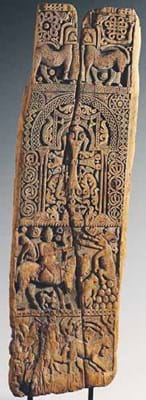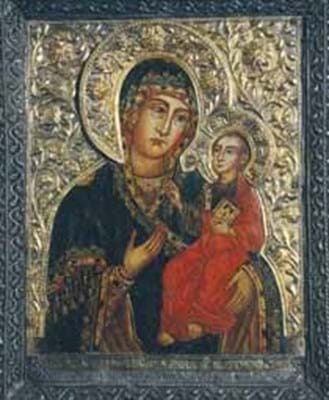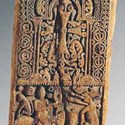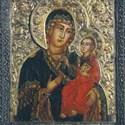The exhibition Art of the Armenians is a collection of 20 very rare manuscript paintings, bookbindings, woodcarvings and icons dating from the 12th to 18th centuries.
It has been assembled by Mr Fogg over the past 10 years and is being offered for sale as a collection with an asking price of "a seven figure sum".
Armenian art of the classical period has survived only in very small quantities, so this is a landmark show for the London art trade and one that is certain to garner international academic and commercial attention.
Indeed, a likely purchaser of the collection is one of a number of wealthy Armenians living in America.
On the Eastern edge of the Christian world, isolated, and sometimes overwhelmed, by Muslim cultures, the Armenians produced a distinctive artistic tradition.
The Fogg collection commences with objects from the medieval period in Greater Aremenia and the Kingdom of Cilicia; later centuries are represented by paintings and books created in communities dominated by other cultures or far from the homeland.
The Armenians' need to preserve and record their culture in adverse circumstances resulted in detailed inscriptions mapping the history of each item.
Owing to the Armenian diaspora over centuries, artists were widely spread and this exhibition illustrates how, while they took inspiration from Persian, Turkish, Greek and Western European painting, these influences were always absorbed into a distinctively Armenian art form.
The earliest piece - and the star item of the collection - is a monumental wooden panel, or door, carved with scenes from the Vision of Daniel.
The katchkar, or carved cross, is the pre-eminent Armenian sculptural device, a form that peaked in the 12th and 13th centuries. Almost all surviving examples are in stone, so this panel, in deeply carved walnut, is exceptional.
Carbon dating has confirmed a 12th century origin and when the piece was shown in the Treasure from the Ark exhibition at the British Library in 2001 it was proposed that it might have been carved at the time of the restoration of the great monastery of Haghpat in 1188.
Of historical and artistic importance is a 15th century Gospel book with paintings by the scribe and painter Ghazar. Gospel books were as central to the culture and faith of the Armenians as icons were to the Byzantines, but icons were also a strong part of Armenian culture.
One in the collection is of the Virgin and Child from the Treasury of Etchmiadzin. Painted in 1696 by Naghash Hovnat'an (1661-1722), the leading Armenian artist of the period, it is one of the oldest surviving Armenian icons.
Little Armenian art is on public view, especially in this country, so this is a rare opportunity to survey the culture of a people who have survived centuries of conquest and conflict.
The exhibition is accompanied by a scholarly £9 ($15) catalogue written by Dr Vrej Nersessian, curator of the Armenian Collections at the British Library. The private view on the evening of September 22 (the day after Armenian Independence Day) will be in the presence of Armenia's Ambassador, Dr Vahe Gabrielyan.
Will a wealthy Armenian step in to buy cultural heritage in one collection?
WHAT is billed as the first ever selling exhibition of early Armenian art to be held in a commercial gallery will be mounted by Sam Fogg at 15d Clifford Street, London W1, from September 22 to October 15.








